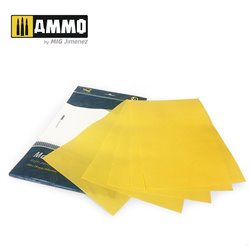The hot wire foam and polystyrene cutter is a tool designed specifically to allow modellers to cut foam, polystyrene...
No products
Product successfully added to your shopping cart
There are 0 items in your cart. There is 1 item in your cart.
Search Tips
What can I use masking sheets for ?
Occasionally, a modeller will have a requirement to paint a model with contrasting colours or tones. Sometimes this can be achieved with masking tape that has been cut and precisely placed as required. This works very well for creating a sharp contrast between areas of differing colour, especially where straight lines are involved.
Occasionally, the contrast may well be more random in shape and size, such as different colours in the camouflage pattern of an aircraft. This is where masking sheets can prove to be particularly useful. Individual sections can be cut as required and can then be placed on the model which can save a lot of time.
One other advantage of using masking sheets is that they are translucent, this means that modellers can trace specific shapes or details to be drawn onto the sheet which can then be precisely cut before fitting to the model. This could be particularly useful where there is a need for repeat or continuous use of a particular pattern or shape.
Similar to masking tape, masking sheets have a low tack adhesive which facilitates placement and removal and eliminates the risk of a sticky residue being left on a model.
Click here to receive the tips weekly in your mailbox. You can unsubscribe at any time.








